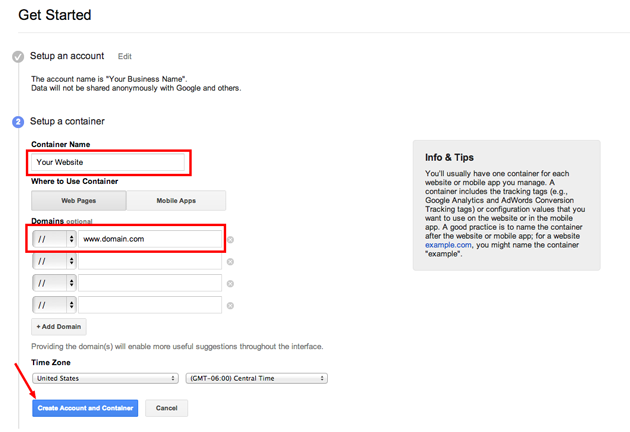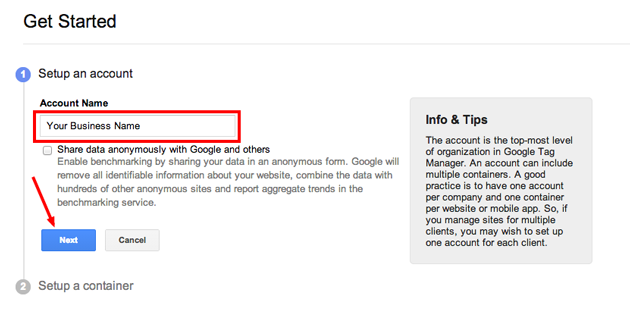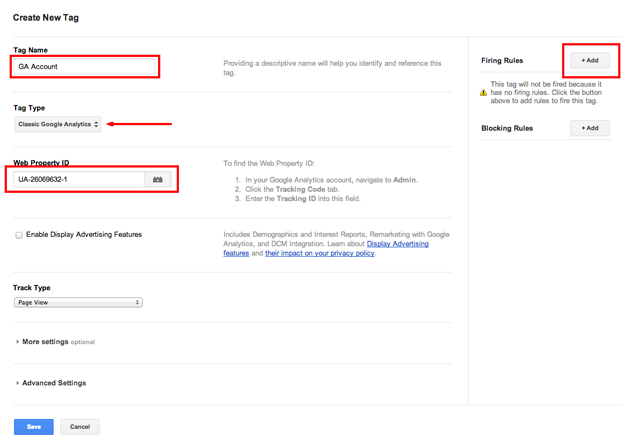Successful search engine optimization doesn't happen in a vacuum. As SEOs and webmasters, we need to constantly monitor our websites to see how they are performing. We need to carefully measure traffic, monitor the success of online advertising campaigns, and assess the ways in which visitors are behaving and interacting with our sites. We all rely on a vast array of tools to help us do just that.
Google Analytics, AdWords, Crazy Egg, AdRoll…the list is nearly endless. While all of these tools are invaluable assets for SEOs and digital marketers, they do have a downside. They tend to clutter up our sites with excessive tags and code snippets, and that can sometimes make our websites slow, unresponsive and difficult to manage.
Site speed and performance are not just important for user experience; these are important metrics used by Google and other search engines in their ranking algorithms. So how can we mine the information we need to keep our optimization strategies on track and still keep our sites streamlined and running at peak efficiency? Google Tag Manager holds the answer. And, if you have any caching on your site (which you should), you could really benefit from using GTM.
What is Google Tag Manager?
Google Tag Manager has been around for a couple of years now, though it's been slow to catch on with the larger SEO community. This is unfortunate because Google's Tag Manager is one of the better things the search engine giant has brought to digital marketing. It’s free, and designed by Google to allow SEOs and their teams to manage all tags and code snippets from one easy-to-use interface. This avoids the need for placing all those tags and snippets in your footer or header templates, or asking your web dev team to do it.
Using GTM, you can create and manage all of your code snippets from one centrally managed place, indicating which pages should fire which tags and when. Google Tag Manager handles the rest, allowing you to save time and keep the code on your websites clean and uncluttered.
Keeping all of your tags and code snippets in one place also cuts down on user error. The built-in debugging console also makes it easy to check and tweak any code snippets that are not working properly. Remember what I said about caching? With GTM, you don’t have worry about page or browser level caching because the code snippet doesn’t change. Awesome, right?
How does Google Tag Manager work?
To use Google's Tag Manager just head over there and sign in. Once logged in, you will need to setup a new account. You can use your business name or anything you like to reference your site.

Next, you will need to create a new “container” and add your domain. Adding your domain is not necessary, but let’s go ahead and keep things clean. If you have a blog, landing page, etc. on a subdomain, you can track it in this same container.

After you create your account and container, you will be provided with a snippet of code that you should add to your site right after the <body> tag. Remember, you will be using GTM for Google Analytics, so your GA code can now be removed. And, on this same page that provides your code snippet, you will also have the option to include GA and/or AdWords right away, along with some other standardized options.
Go ahead and click on the Google Analytics option below on the code snippet window. Next, you’ll want to fill in the fields that pertain to your GA account. You can choose Classic Google Analytics or Universal Analytics. Choose the option that matches your Analytics account, and add your Google Analytics ID.

There are two more steps to activate your new GTM container. First, you will need to add a “Firing Rule” by clicking “add” in the upper right. For this example, you will just choose the “all pages” option, and click save. If you had, say ,Crazy Egg running, you could add a firing rule for a specific page by creating a conditional rule for that page only.
And finally, click “publish” and GTM will tell you that a new “version” was created. Go ahead and accept. You can also create and name different versions that might or might not include specific services you’re running that month.

Now, when a page from your website loads, this activates a request to see what, if any, tags or code snippets should be fired from GTM. So, for our example, it will fire the required code for GA, and the visits will be logged into your Analytics account. Also, you can still track more complicated events such as form submits and click listeners by following this article on Google. I just wanted to show a basic example in this post.
What are the benefits of Google Tag Manager?
Why should you use Google's Tag Manager? Aside from its easy-to-use interface and the luxury of having all of your tags and code snippets gathered in one place, GTM offers several distinctive benefits for SEOs and webmasters.
Save Time — Using Google Tag Manager you can make changes to your code snippets at any time, and those changes will go into effect immediately. No waiting for your web dev team to get around to inserting the necessary code on every page of your website. Better Tag Management — Many websites contain multiple tags and snippets. GTM allows you to clean up your website's code, and makes any subsequent editing of tags and snippets quick and easy by using different “versions.” Improved Site Speed — Placing tags and snippets on each page of a website can impact its loading time and performance with less individual requests from your site. With Google's Tag Manager, your website's code will be cleaner and more streamlined, resulting in better response times and improved user experience. Easy Debugging — Having to debug your code after it has been published to your website can be costly and time-consuming. With Google Tag Manager you can easily tweak and change any code snippets that are faulty, and when re-launched, they will go live immediately.Successful SEO hinges on being able to accurately monitor a website's traffic, performance and user interaction. Google Tag Manager makes that task easier by gathering all of the necessary tags and code snippets in one place.
With GMT, you can get the analytical information you need without bogging down your website with excessive code snippets and tags. That makes for a better user experience, as well as a better operational experience for everyone.
Innovative SEO services
SEO is a patience game; no secret there. We`ll work with you to develop a Search strategy focused on producing increased traffic rankings in as early as 3-months.
A proven Allinclusive. SEO services for measuring, executing, and optimizing for Search Engine success. We say what we do and do what we say.
Our company as Semrush Agency Partner has designed a search engine optimization service that is both ethical and result-driven. We use the latest tools, strategies, and trends to help you move up in the search engines for the right keywords to get noticed by the right audience.
Today, you can schedule a Discovery call with us about your company needs.
Source:




![How To Create a Strategic Dashboard in Excel Using Semrush Data [Excel Template Included]](https://new.allinclusive.agency/uploads/images/how-to-create-a-strategic-dashboard-in-excel-using-semrush-data-excel-template-included.svg)
